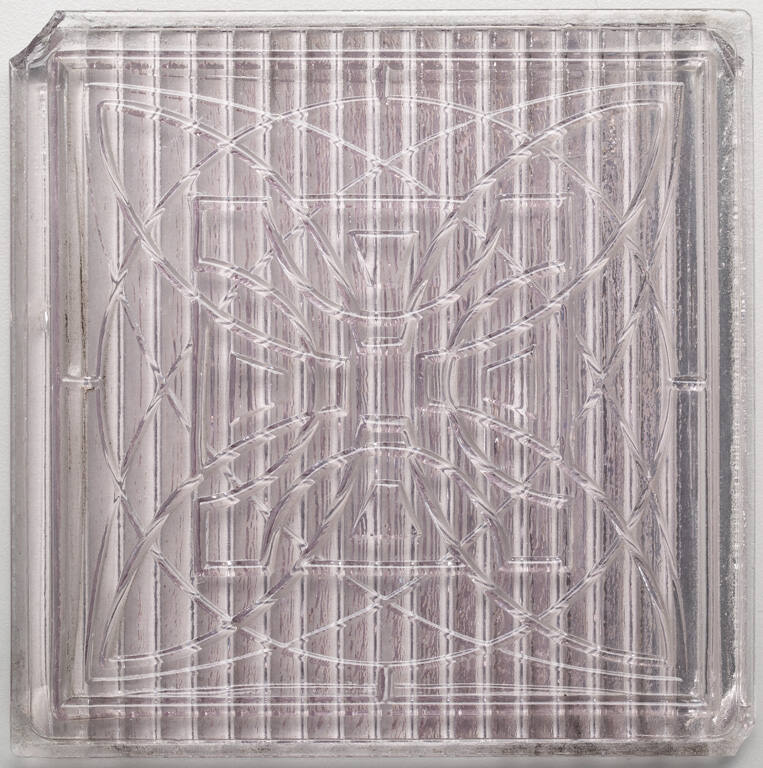
Object Details
Artist
Louis Comfort Tiffany
Date
ca. 1892
Medium
Glass
Dimensions
4 1/2 x 5 1/2 inches (11.4 x 14 cm)
Credit Line
Edythe de Lorenzi CollectionBequest of Otto de Lorenzi
Object
Number
64.0898
BRIEF DESCRIPTIONThis is a small Tiffany compote made of clear glass that fades to aquamarine. Notic(…)
BRIEF DESCRIPTIONThis is a small Tiffany compote made of clear glass that fades to aquamarine. Notice the iridescent crackle effect along the edge. You can also see a stylized leaf pattern on the surface of the bowl.WHERE WAS IT MADE?Tiffany glass was made at the Tiffany Glass Furnaces in Corona, located in Queens, New York.WHO WAS THE ARTIST?Louis Comfort Tiffany was the eldest son of Charles L. Tiffany, founder of Tiffany & Company, the New York jeweler. Tiffany was trained as a painter, studying with both George Inness and Samuel Coleman in New York and Leon Bailly in Paris. He eventually turned his attention to decorative arts and began experimenting with glass-making techniques in 1875. After success with stained glass windows and mosaics, Tiffany established the Tiffany Glass Company in 1885 and began devoting production to one-of-a-kind blown glass art objects. He soon became one of America’s most prolific designers, providing furniture, wallcoverings, textiles, jewelry and glass to some of society’s most important citizens.HOW WAS IT MADE?Like many Tiffany glass objects, this compote was created using a blowpipe. The iridescence on this compote is a decorative effect achieved by introducing metallic substances into the batch or by spraying the surface of the vessel with oxides like stannous chloride or lead chloride and then reheating it in a reduced atmosphere. Ancient glass often has an iridescent appearance caused by the effects of weathering.Notice the leaf pattern on the surface of this compote. It was engraved, a process that involves cutting the surface of the glass by holding it against a rotating wheel of stone or metal that is fed with an abrasive.HOW WAS IT USED?A compote is a long-stemmed dish typically used to hold fruit, nuts, or candy.WHY DOES IT LOOK LIKE THIS?This compote is an example of Tiffany’s Favrile glass. In 1894, Tiffany patented his iridescent glass under the name Favrile. The word Favrile is derived from the Old English fabrile, meaning hand-wrought. Tiffany design was inspired by glass from ancient Rome and the Islamic world, Venice and Bohemia. Tiffany combined his talent as a colorist, naturalist, and designer with his experimentations on blown glass surfaces. Vessels were fumed with metallic oxides to achieve iridescence.To see other examples of Tiffany’s Favrile glass in the Johnson Museum’s collection, search for object numbers 57.072, 57.080, 57.088, 57.097, 57.106, 64.0840, 64.0841, 64.0842, 64.0843, 64.0850, 64.0865, 64.0875, 64.0879, 64.0885, 64.0889, 64.0904, 99.078.118 a,b, and 2001.075.003 in the keyword search box.The leaf pattern on this compote is typical of Tiffany’s Art Nouveau style objects. Art Nouveau, French for “New Art,” refers to an artistic style that was developed in Europe in the 1880s, and remained enormously popular into the first decade of the 20th century. It is characterized by whiplash curves, organic imagery and sinuous lines. The name Art Nouveau came from the Paris shop of Siegfried Bing that opened in 1895, quickly popularizing the works of artists like Louis Comfort Tiffany, whose work became synonymous with (or symbolic of) the American Art Nouveau style.The design for this compote may have been derived from a 16th century Venetian glass form called a tazza. Tazzas were stemmed, shallow cups used by the elite for drinking wine.To see other compotes in the Johnson Museum’s collection, search for object numbers 57.086, 64.0849, 64.0873, 64.0902, 68.209, and 68.210 in the keyword search box.












